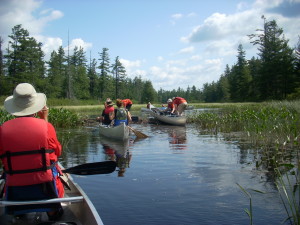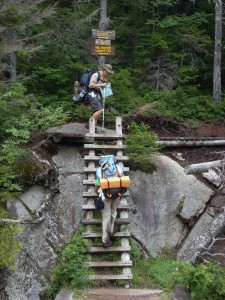Priest and Gass, in their book Effective Leadership in Adventure Programming, 2nd ed., 2005, conclude that competent planning for an outdoor activity includes the following items:

- Reason for the trip (what are the purposes, goals and objectives?)
- Activities involved (do the activities meet the purposes, goals and objectives?)
- Locations (does the venue conform to the activity goals?)
- Route and schedule (is the route and schedule compatible with the activity goals?)
- Participants (are the participants appropriate for the activity?)
- Groups (is the contemplated group size consistent with learning opportunities without undue environmental impact?)
- Staffing (is the staff technically competent and able to work well together under the contemplated conditions?)
- Equipment (are the three types of equipment (individual, group, and risk management) provided for?)
- Food and water (will adequate supplies of food and water be available?)
- Accommodations (do the accommodations match the needs of the group?)
- Transportation (can the participants be transported without undue risk?)
- Communication (is there communication means for weather and medical assistance?)
- Safety and risk management (are participant health information, nearest medical facility, contact information for participants’ relatives, “Plan B” measures, signed legal forms, medical resources, etc. accounted for?).
While “safety and risk management” is a separate item on the list, each of the prior items are important aspects of the risk management equation.

Rick Curtis, Director of the Outdoor Action Program at Princeton University, and author of The Backpacker’s Field Manual, in an article titled “Outdoor Action Guide to Developing a Safety Management Program for an Outdoor Organization”, identifies the following areas deemed important to the development of a safe outdoor program:
- Program analysis (activity, participants, venue, weather)
- Participants (who are they?)
- Leader and leader training (what core skills are required?)
- Pre-trip information (is informed consent as to the metes and bounds of the activity provided?)
- Participant screening (medical history, physical condition, prior experience)
- Trip planning (route, weather, equipment, trip plan, who is in charge?)
- Participant training (learn the “Dynamics of Accidents” model)
- Policies, procedures & guidelines (parameters for action, situation actions)
- Incident data collection and analysis (accidents, close calls, analysis
The above listings are similarly important to the planning and conduct of outdoor Scouting activities. Indeed, many of the noted items can be found in the Sweet 16 of BSA Safety.
Attention is also directed to the new (2017) BSA TAP adventure planning tool.
Successful risk management for an outdoor Scouting activity begins with competent planning!
